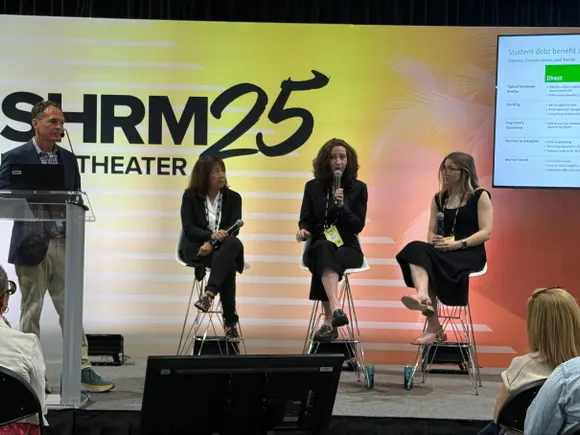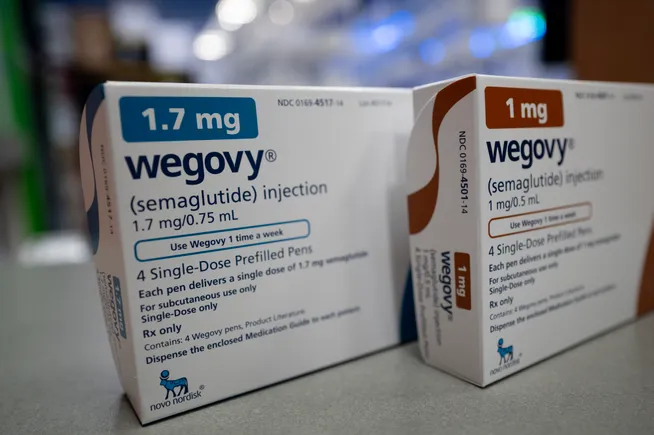SAN DIEGO — Applied Materials’ student loan repayment program for employees reaped such rewards that the company more than doubled its annual contribution after the first year, Tes Fernandez, director of U.S. benefits for the company said Monday during a panel discussion at SHRM 2025.
In year one, the manufacturing company contributed $2,000 per employee in direct repayment of workers’ student loans. In the years that have followed, Applied Materials now pays out $4,800 per employee and uses the benefit as both a way to support generally newer hires, recent graduates and some underrepresented groups and as a recruiting tool.
“They had to go up to the CFO and ask for extra millions of dollars to add this benefit. A year later, they more than doubled the benefit amount, not because the CFO got generous, but because they were seeing the results of the benefits,” Chris Rinko, VP and student debt and health and wellness benefits administration account executive at Fidelity Investments, said during the panel, which he moderated.
When it comes to student loan debt assistance, employers have two choices, Rinko explained. They can either provide a direct payment to student loan servicers to help pay down employees’ loans, or they can elect to offer matching contributions in the 401(k) plans of workers who demonstrate they are making student loan payments.
The direct payment method can be targeted to only apply to certain groups — those who earn less or those in a specific job, for example — and can have a set end date, Rinko said, while matching contributions are tied to a company’s overall 401(k) plan offering and can’t exclude any workers.
Tracey Gannon, a senior benefits manager at eBay, said it was “kind of a no-brainer” for the e-commerce company to offer matching funds after the passage of the SECURE 2.0 Act. The law gave employers the ability to match employee contributions to certain student loan payments.
“We felt that this was just such an easy first step,” Gannon said.
The company already budgets for all employees to get the full matching contribution in their retirement plans and has a 96% participation rate, Gannon said. That meant the new offering wasn’t a big budget item for the company but could provide support to some employees in need.
Similarly, offering a matching contribution seemed like “an easy win” for The Walt Disney Co. and its workers, said Marianne Lynch, a senior manager of executive benefits and hypercare for the company.
“It’s a huge, huge benefit to reduce that burden” of student loan debt, Lynch said. At Disney, 97% of employees already receive the full 401(k) match, but for those who don’t, it’s a way not to miss out on the matching funds to which they’re already entitled, she added.
“The only change here is you’re giving them another way to earn that match by paying their student debt,” Rinko said.
At companies where most employees already receive the full matching contribution, some leaders may ask, “Why bother?” with a student loan repayment match, Rinko said.
“The reason is, if it’s just 1% or 2%, if you can find a path for that small number, for those people who are usually in the greatest need to earn the match, why not?” Rinko said.






Leave a Reply